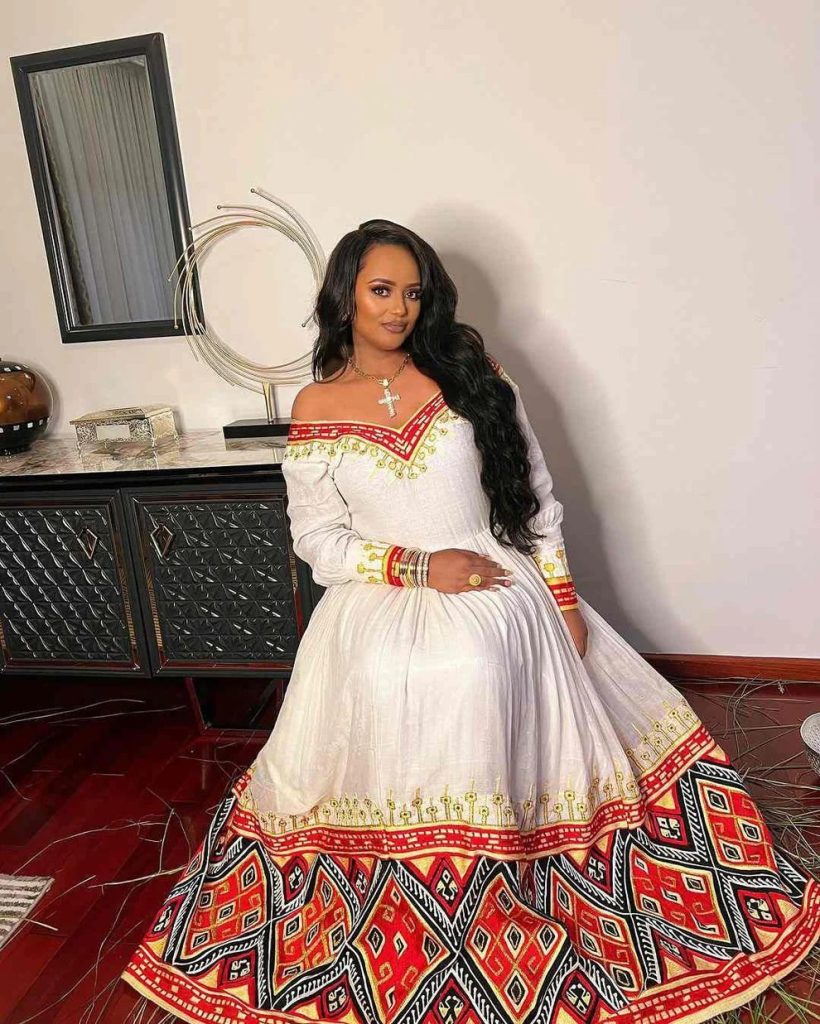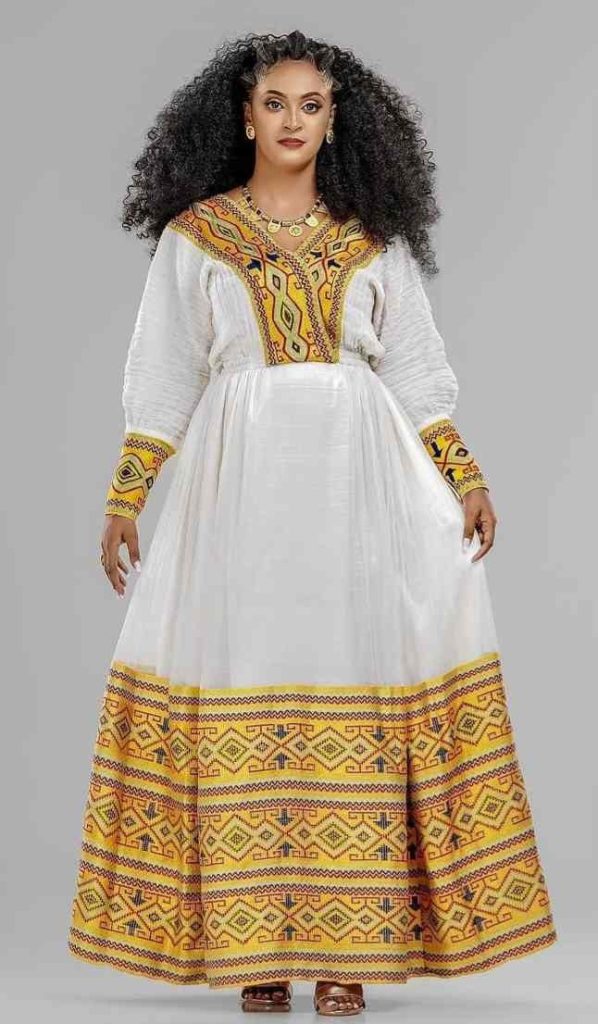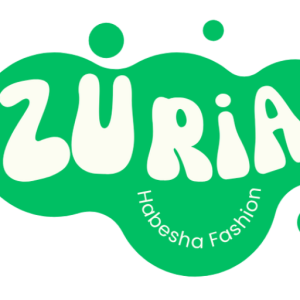Custom Ethiopian Dresses: Tailored Habesha Fashion for Every Occasion
Clothing has always been more than fabric. It reflects history, community, and identity. In Ethiopia, traditional clothing carries layers of meaning that go beyond style. The Ethiopian traditional dress is one of the most recognisable cultural outfits in East Africa, celebrated for its elegance, symbolic value, and craftsmanship. Known widely as the Habesha dress or Habesha kemis, this attire is most often made from cotton and handwoven using ancient techniques passed down through generations.
What makes these garments even more special is how adaptable they are. From everyday wear to weddings and religious ceremonies, the Habesha dress has remained a cornerstone of Ethiopian and Eritrean culture. Today, tailored versions of these outfits allow people to celebrate their heritage while also embracing modern style.
What is a Habesha Dress?
A Habesha dress (often called Habesha kemis) is typically a white or cream cotton dress with intricate embroidery, known as tibeb, around the neckline, sleeves, and hem. The fabric, called shemma, is handwoven on traditional looms. The patterns vary by region, and the artistry reflects the weaver’s skill and cultural influences.

Elegant Habesha kemis with embroidered neckline, sleeves, and bottom
The dress is usually worn with a matching shawl, called a netela (ነጠላ), draped over the shoulders or head. While white is the most traditional base colour, modern Ethiopian and Eritrean dresses now feature colourful fabrics, gold accents, and even contemporary cuts that appeal to younger generations.
Origins and Historical Background
The roots of the Ethiopian traditional dress trace back centuries. Cotton weaving has been part of Ethiopian culture since at least the Aksumite era. Women in rural areas have historically worn Habesha kemis for daily life, while special versions were reserved for feasts, holidays, and weddings.
These garments also highlight the social and spiritual role of weaving. The practice of creating shemma cloth is itself an art form and is recognised as part of Ethiopia’s living heritage. In fact, handweaving traditions recognised by UNESCO show how essential this skill is to preserving cultural identity.
The Cultural Significance of Ethiopian and Eritrean Dresses
Shared Heritage Between Ethiopia and Eritrea
Although Ethiopia and Eritrea are now separate nations, the Habesha dress remains a cultural symbol shared by both. You will often see the same weaving styles, tibeb patterns, and cotton-based outfits worn in Addis Ababa, Asmara, and diaspora communities around the world.
Symbolism of White Cotton and Handwoven Designs
The predominance of white cotton in the Ethiopian dress symbolises purity, peace, and spirituality. The coloured embroidery, meanwhile, carries regional and family-specific meanings. For example, crosses and geometric patterns are common in dresses worn for Orthodox Christian events.
Religious and Festive Uses
The Ethiopian traditional dress plays a central role in festivals such as Epiphany (ጥምቀት), Finding of the True Cross (መስቀል), and weddings. For Eritrean communities, similar customs exist around holidays like Independence Day and religious feasts. These dresses are more than fashion; they are markers of cultural pride.
Types of Ethiopian Dresses and Habesha Kemis
Everyday Habesha Kemis
In rural areas, women may wear simple cotton kemis daily. These versions are less embroidered and more practical, but still represent heritage.
Wedding and Special Occasion Dresses
The most elaborate Habesha dresses are designed for weddings. Brides often wear heavily embroidered white or golden kemis with matching shawls, while grooms may wear tunics or cloaks made from the same woven cloth. For modern Ethiopian weddings, custom-tailored outfits are highly sought after.
Modern Adaptations and Fashion Influences
Contemporary designers have reimagined the Ethiopian traditional dress by blending Western tailoring with Ethiopian motifs. Shorter cuts, off-shoulder styles, and colourful fabrics are now popular with younger generations. This fusion allows people to honour tradition while still embracing personal style.
Custom Tailoring: Why Bespoke Habesha Dresses Stand Out
Benefits of Tailored Ethiopian Dresses
Off-the-rack dresses rarely match the uniqueness of custom tailoring. A custom Ethiopian dress ensures that the embroidery, fabric, and fit reflect the wearer’s body shape and personal taste. This level of detail is especially important for brides and families during weddings.
Preserving Tradition with Personal Style
Tailoring allows people to preserve the cultural essence of the Habesha kemis while adding individual elements. Some may request specific colours to represent family heritage, while others incorporate modern cuts without losing the traditional look.
How to Commission a Custom Dress
Ordering a custom Habesha dress usually involves choosing the fabric, embroidery style, and design. Many tailors are skilled in creating hybrid looks that balance old and new. Whether in Addis Ababa, Asmera, or diaspora hubs like Washington DC and London, artisans work closely with clients to create a truly personalised garment.

Short white custom-made Habesha dress paired with netela shawl
Habesha Dress Across Occasions
Weddings and Engagements
No Ethiopian or Eritrean wedding feels complete without habesha dresses. Bridesmaids often wear matching kemis, while the bride stands out in a heavily embroidered gown. Engagement parties also feature coordinated family outfits.
Religious Celebrations and Holidays
During Timket, Meskel, Fasika (Easter), and other religious events, it is common to see people dressed in white Ethiopian traditional dresses with embroidered shawls. The clothing signals both respect and communal joy.
Contemporary Events and Fashion Shows
Beyond traditional events, Habesha-inspired fashion is now part of global runways. Designers showcase Ethiopian dress styles at African fashion weeks, and diaspora communities proudly display them at cultural festivals.
Modern Evolution of Ethiopian Traditional Dress
Influence of Designers in Ethiopia and Abroad
Designers like Feven’s Couture and Fikirte Addis are reinventing the Habesha kemis with bold colours and creative cuts. Their work bridges heritage with modern fashion, making these garments accessible to younger audiences.
How the Diaspora Keeps Habesha Fashion Alive
In the diaspora, Eritrean dress and Ethiopian dress shops are essential for keeping traditions alive. Families abroad often commission tailors back home or order online to ensure authenticity.
Integration into Global Fashion Trends
As interest in African fashion grows, the Ethiopian traditional dress is gaining recognition beyond the Horn of Africa. The fusion of handwoven cotton and contemporary design appeals to audiences who value craftsmanship and heritage.
Caring for Your Ethiopian Traditional Dress
Cleaning and Maintenance Tips
Since most Habesha dresses are made of cotton, handwashing in cold water is best. Harsh detergents can damage the embroidery. Drying in the shade also helps preserve the fabric’s brightness.
Preserving Handwoven Fabrics
To keep a custom Ethiopian dress in good condition, avoid frequent machine washing. Store it folded neatly with tissue paper or in breathable garment bags. Some families even pass down these dresses through generations, making preservation essential.
Where to Find Authentic Ethiopian and Eritrean Dresses
Local Artisans and Tailors
In Ethiopia and Eritrea, skilled artisans still weave fabric by hand. Purchasing directly from local markets not only guarantees authenticity but also supports weaving communities.
Diaspora Boutiques and Online Stores
For those abroad, many online shops and diaspora boutiques offer authentic Habesha kemis. Ordering from trusted vendors ensures the same craftsmanship and quality found back home.

Cultural Ethiopian dress design for weddings and holidays
The Timeless Appeal of Custom Ethiopian Dresses
The Ethiopian traditional dress is not just clothing; it is a living link to heritage, spirituality, and artistry. Whether worn at weddings, religious celebrations, or cultural festivals, the Habesha dress stands as a symbol of unity and pride.
Custom tailoring elevates this further, allowing people to combine tradition with personal style. From the cotton threads woven on looms to the embroidery that tells stories of generations, each dress carries a piece of Ethiopia and Eritrea’s cultural soul.
For those seeking timeless elegance and cultural authenticity, a custom Ethiopian dress remains one of the most meaningful fashion choices available today.

